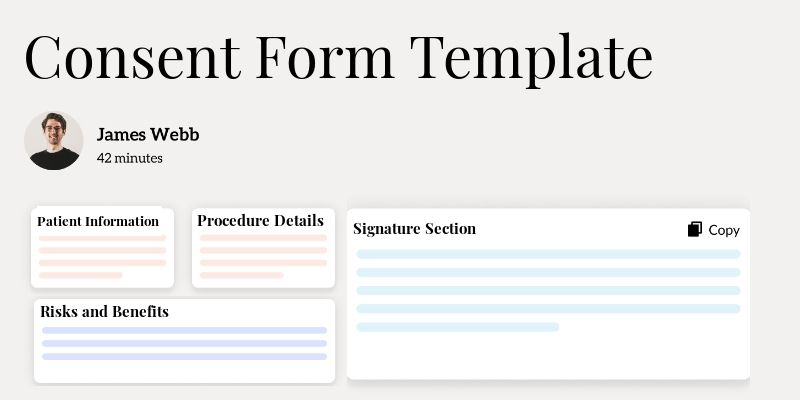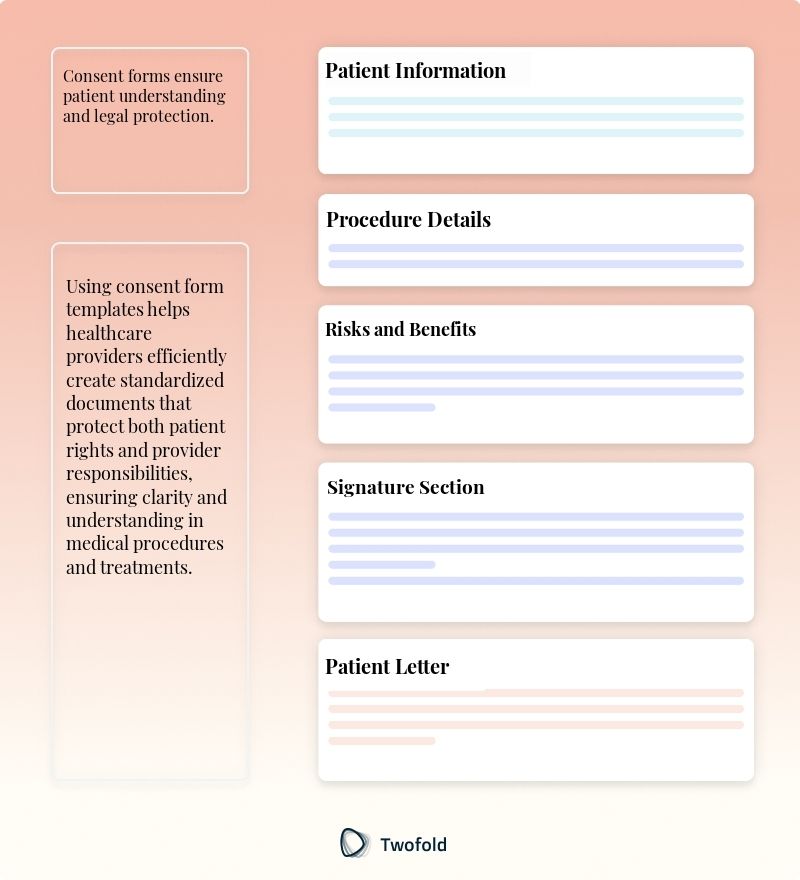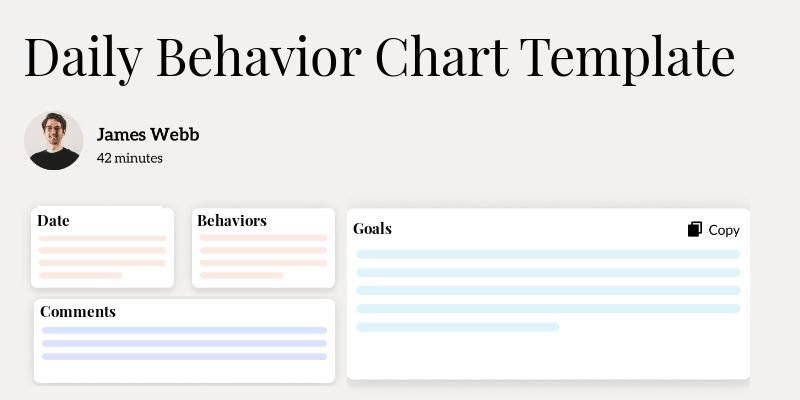
Consent Form Template
Welcome to the world of medical documentation, where precision meets compassion. Today, we're tackling a topic that often poses a conundrum: medical consent forms. These documents, though seemingly straightforward, can sometimes feel like an intricate puzzle requiring both diligence and clarity. Whether you're a seasoned practitioner or new to the scene, the challenge of creating an effective consent form is universal. If you've ever found yourself pausing over phrasing or second‑guessing inclusions, you're in the right place. Let's explore this crucial element in patient interaction.
What Is a Consent Form Template?
A consent form template is a standardized document used in medical settings to inform patients about the risks, benefits, and procedures involved in their care. Its primary purpose is to ensure that patients have the necessary information to make informed decisions about their treatment plans.
This template simplifies the process for healthcare providers, offering a uniform approach to obtaining consent. Standardization ensures that all necessary information is included and presented in an easy‑to‑understand format, safeguarding both the healthcare provider and the patient.
Key Components of a Consent Form
An effectively designed consent form should include several key elements:
- Patient Information: Full name, date of birth, and contact details of the patient.
- Procedure Description: Clear explanation of the procedure, including risks and benefits.
- Alternative Options: Information about any alternative treatments available.
- Confidentiality Clause: Assurance of patient privacy and confidentiality.
- Questions Section: A designated area for patients to ask questions and record responses.
- Signature Line: Space for patient and healthcare provider signatures, along with dates.

How to Use a Consent Form Template: Step-by-Step Process
Step 1: Prepare the Template
Start by customizing the template with your practice's letterhead and contact information to give it an official presence.
Step 2: Fill in Procedure Details
Detail the specific procedure, risks, and benefits. Tailor the information to be as specific as possible to the patient's condition.
Step 3: Discuss with the Patient
Provide the patient with a copy of the form. Go through each section to ensure understanding and provide an opportunity for questions.
Step 4: Obtain Signatures
Once the patient is comfortable with all details, both the patient and the healthcare provider should sign the form.
Benefits of a Consent Form
Benefit | Description |
|---|---|
Legal Protection | Provides a documented agreement and understanding between patient and provider. |
Patient Understanding | Ensures patients are fully informed about their medical care options. |
Standardization | Offers a uniform approach to patient consent across different procedures and treatments. |
Improved Communication | Fosters open dialogue between healthcare provider and patient. |
Stakeholders in Consent Form Use
Several parties interact with consent forms in medical environments:
- Patients: For instance, a patient receiving elective surgery relies on these forms to understand their procedure and its implications.
- Healthcare Providers: Doctors and nurses use these forms daily to ensure they have legal consent before proceeding with treatments.
- Legal Teams: Legal advisors may review consent forms during malpractice suits to confirm all sides were informed and agreed upon.
- Ethics Committees: In research settings, these forms ensure participant awareness and consent, as seen in clinical trials.
Example of a Consent Form PDF
Imagine a clear and concise consent form PDF that includes all necessary fields, ready to print and use for real‑world scenarios without delay.
Real-World Use Cases: Practical Impact of the Consent Form Template
Consent forms play a significant role in various medical scenarios:
- A surgical team prepares a patient for a complex operation, using the consent form to detail each step and potential outcome thoroughly.
- In a clinical trial, participants review and sign a consent form that outlines study objectives and potential risks clearly.
- At a dermatology clinic, patients undergoing new treatments receive detailed information through these forms, ensuring they know the possible side effects.
Conclusion
Consent forms are pivotal tools in medical documentation, bridging the gap between clinical procedures and patient understanding. They ensure clarity, legal protection, and effective communication, making them indispensable in healthcare settings. By following best practices and expert tips, these templates not only simplify the consent process but also strengthen trust and transparency in patient‑provider relationships.
Disclaimer: This article is for informational purposes only and does not constitute legal or medical advice. Always consult professional guidelines and regulatory bodies for specific compliance requirements.

Dr. Danni Steimberg
Dr. Danni Steimberg is a pediatrician at Schneider Children’s Medical Center with extensive experience in patient care, medical education, and healthcare innovation. He earned his MD from Semmelweis University and has worked at Kaplan Medical Center and Sheba Medical Center.
- Always keep the language simple and clear to avoid any misinterpretation.
- Include a section for patients to initial each page, confirming their understanding as they progress through the document.
- Periodically review and update the consent form to ensure it reflects current laws and medical standards.
- Incorporate a space for patients to ask questions and receive answers before signing.
- Consult with legal advisors to ensure the document is not only informative but also legally sound.
Frequently Asked Questions
Reduce burnout,
improve patient care.
Join thousands of clinicians already using AI to become more efficient.

Daily Behavior Chart Template
Discover practical Daily Behavior Chart templates to enhance your documentation efficiency.

Client Feedback Form Template
Discover practical Client Feedback Form templates to enhance your documentation efficiency.

Appointment Reminder Template
Discover practical Appointment Reminder templates to enhance your documentation efficiency.

